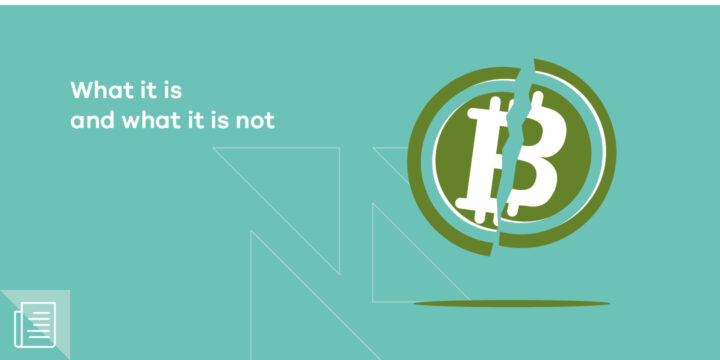
Bitcoin, an open-source decentralized software product whose white paper was released by Satoshi Nakamoto, which could either be a single individual or a denominator for a group, in 2008 and then launched in 2009, has been an item of interest ever since.
There is no lack of legends, myths and even apocryphal rumors when it comes to bitcoin. So, what is bitcoin really?
Myth 1: Bitcoin is a Ponzi scheme | False
Truth: Some groups conflate Bitcoin with Charles Ponzi’s illegal method, the Ponzi scheme or Ponzi system. In reality, they are worlds apart.
In 2014, Kaushik Basu, the chief economist of the World Bank, published a detailed report on the subject. The report says, “Contrary to popular belief, Bitcoin is not a Ponzi scheme. Bitcoin’s true value might be the lessons it teaches central banks about what to expect from electronic currencies and how to increase efficiency and lower transaction costs.”
Bitcoin’s primary selling point is its decentralized structure. It is not managed by a center or person as is the case with Ponzi schemes. On the other hand, its limited supply and transparency with all transactions highlight the safety of Bitcoin as a currency, stemming from its technological infrastructure. Prices are determined only by supply and demand. Therefore, it is false information that Bitcoin is part of the Ponzi scheme.
Myth 2: Bitcoin is a bubble | False
Truth: Bitcoin’s price chart with sudden ups and downs has led many to claim it is purely a ‘bubble’. It has even been compared to the “tulip mania” in the Netherlands between 1636 and 1637 and the ‘Dot-com’ crash of the early 2000s.
But Bitcoin has one big difference: Despite the price volatility, it has functioned flawlessly since 2009 and is still here. Moreover, it should be remembered that it holds great promise as a decentralized technology product that can radically change the entire system. Therefore, it is not price volatility that defines Bitcoin, but rather its infrastructure, which offers impeccable technology, data and asset security, transparency, ease of transfer and low costs. Blockchain technology, which forms the basis of Bitcoin, has already proven that it is the technology of the future.
Myth 3: Bitcoin does not have a secure infrastructure | False
Truth: According to this false claim, churned out by those unfamiliar with the blockchain technology that forms the basis of Bitcoin, Bitcoin does not have a reliable infrastructure. But the opposite is true. The blockchain technology is like an unchangeable ledger. Featuring tamperproof technology, all records are stored on thousands of computers, making it impossible for a person or group to manipulate information. Also, various blockchain networks emerged after the advent of Bitcoin. Although its most popular product is cryptocurrencies, blockchain, with its immutable structure and technology that enables transparency, is now used in various fields.
Myth 4: Bitcoin is too complex | False
Truth: Bitcoin’s cryptology-based infrastructure and operation may seem complicated to those not very familiar with how software works. However, bitcoin end users do not need to be familiar with this technology. Secure trading and storing is what is important to end users.
Since the launch of Bitcoin, trading has become quite easy. It takes seconds to make these transactions through cryptocurrency trading platforms. It’s almost as fast and easy as accessing information in a search engine or sending an email. Therefore, it is not the right perspective to highlight the complexity of Bitcoin.
Myth 5: Bitcoin is illegal | False
Truth: It is not true that Bitcoin is illegal. The leading countries of the world regulated the cryptocurrency markets. Today, cryptocurrency markets are regulated in countries such as Japan, South Korea, Germany, Switzerland, the USA, and Canada.
In Turkey, new regulatory arrangements continue and it has been officially confirmed that concrete steps have been taken in this regard. Therefore, Bitcoin and cryptocurrencies are not illegal.
Myth 6: Bitcoin’s decentralized structure may pose vulnerability for investors | False
Truth: Bitcoin opponents argue that decentralization is a drawback that may pose vulnerability for investors. The argument goes that lack of a higher authority to interpose itself in disputes may cause serious issues. But decentralization is a system that actually prevents problems and grievances.
The Bitcoin blockchain network is a structure that provides its own security without any intervening authority. Data entered in a block is contained in blocks across the entire network, which cannot be changed or deleted. If a hacker tries to infiltrate the network, it will be useless because the false data will not be confirmed by algorithms. It is a self-contained system capable of protecting itself as well as its users. Apart from this, users choosing reliable platforms that offer round the clock support service can get help at any time should anything go wrong.
Myth 7: Bitcoin is no better than gambling | False
Truth: The idea that Bitcoin investments are based on luck is not true. Accepted as a reliable investment tool all over the world with a market value of approximately 620 billion dollars, Bitcoin has proven its mettle.
Priced according to the supply-demand mechanism as with other investment instruments, Bitcoin also offers advantages over other instruments in terms of speed, safety, and cost.
Powered by cryptology, Bitcoin cannot be compared to gambling, which carries high risks and promises no actual service, because Bitcoin is a digital currency that allows peer-to-peer payments. That being said, every investment instrument comes with certain risks. The important thing here is that users should act on correct information, and not investment advice, and trade their assets according to their own investment profile and portfolio.
Bu içerik en son 26 October 2022 tarihinde güncellenmiştir.
